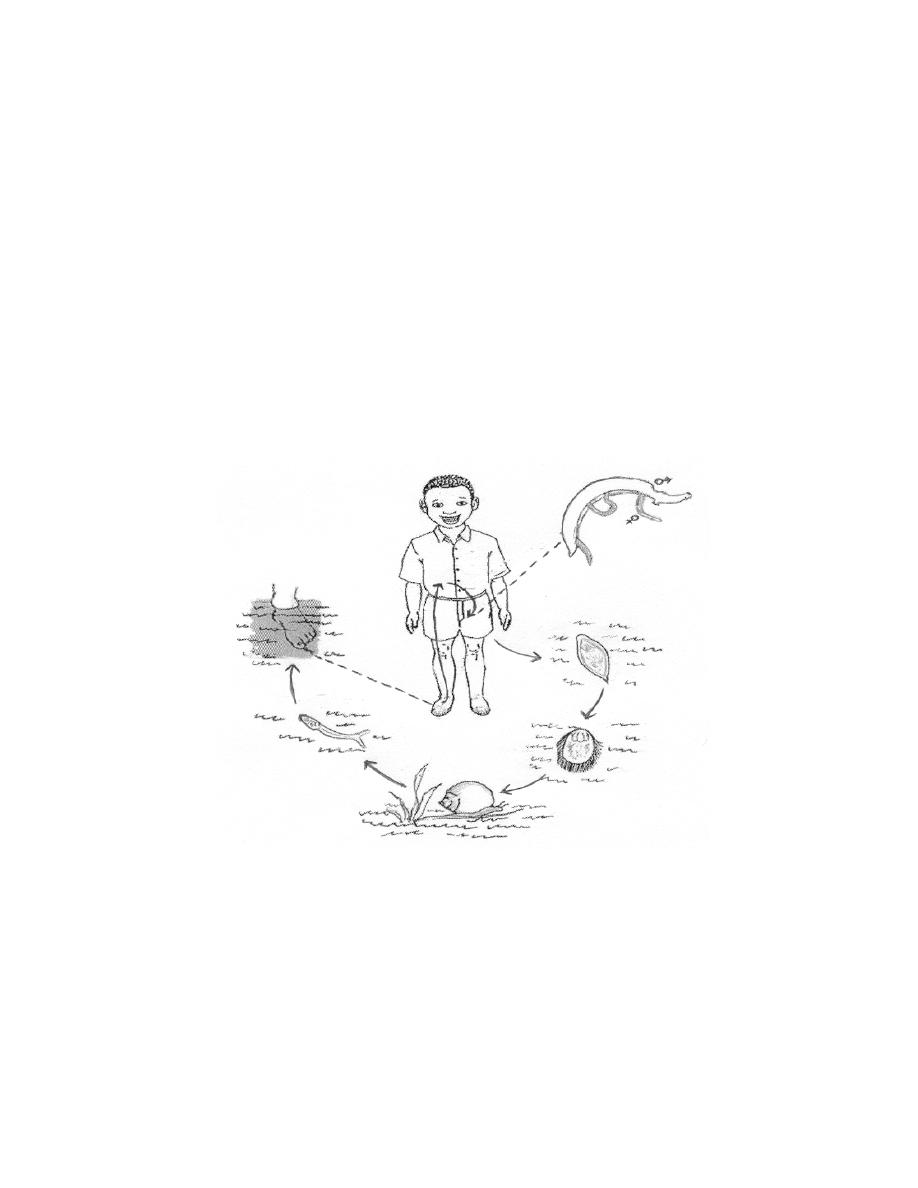
[1]
Specific Infections of the Genitourinary System
Tuberculosis of the genitourinary tract
TB of GU tract is caused by mycobacterium bovis it
predominantly affect Asian male more than female Rt kidney more
than left
Pathogenesis
Primary TB :affected lung
Post primary TB
Re activation of primary one trigger by immune system
Kidney
Haematogenous spread causing granuloma with caesous necrosis of
cortex and papillary deformity and heeling by fibrosis and
calcification(autonephrectomy)
Ureter: it gat directly from kidney causing ureteric stricture and
uretertis cystica
Bladder : ether from
1\Renal infection
2\ iatrogenic from interavesical BCG
Bladder wall became oedmatous ,red, with ulceration and
trabiculation then disease progress to fibrosis
contraction small capacity bladder ( thimble bladder)

[2]
Epididymis and vas : gate beaded cord
Kidney and prostate is properly gat primary TB
Presentation
GU TB should be suspected in present of any present or past
history of TB with :
chronic cystitis resistant to treatment
• sterile pyuria
• Gross or microscopic haematuria
• Non tender enlarge epididmis with beaded or thinking vas
• Chronic discharging scrotal sinus
• Indurations or nodulation of prostate and thinking of one or
both seminal vesicles
Investigation
o Urine :at least 3 early morning urine samples
Sating by Ziehal Neelsen stainging
Culture media for TB is jensen medium
o CXR and sputum
o Tuberculin skin test
o PCR
o IVP :ether normal or show calcification, infundibular steno
sis, cavitations ,bladder calcification

[3]
o CT
o Cystoscopy and biopsy
Treatment : for 6 months
Inculd isoniazid,rifampicin,ethambutol,streptomycin and
pyrizinamide
Ureteric stricture treated by stenting, nephrostomy or reimplantion
Bladder may required augmentation or reconstruction, or diversion
Any surgical intervention .need at least 6 week medical Rx
The site most commonly affected is the ureterovesical junction
(UVJ)
CT has replaced IVU for the diagnosis and evaluation of
genitourinary TB
*It is at least the equal of IVU in identifying
-calyceal abnormalities,
-hydronephrosis or hydroureter,
-autonephrectomy, amputated infundibulum,
-urinary tract calcifications, and
-renal parenchymal cavities
*However,these findings are not specific
Urinary Schistosomiasis

[4]
Is caused by atrematode or (fluke) called Schistoma haematobuim
that present in egypt ,africa and middle east . a fresh water snail
release the infective form of parasite (cercariae) that penetrate the
skin and migrate to liver as (schistosomules) where they
mature ,adult warm couple migrate to the vesical veins and lay eggs
(containing miracidia larvae)that penetrate bladder and enter urine
the disease have 2 stage:
1- active :worms actively laying eggs)
2- inactive :worm died and there is immunological reaction to eggs
6
7
1
2
3
4
5
7
Eggs are
Miricidia hatch
Larval multiplication
…and enter unbroken
skin,
Worms continue to
develop
Adult worms end
up in veins
6
Cerariae
Presentation
• Swimmer itch

[5]
• Katayama fever ( generalize allergic reaction)
• Active inflamination causing terminal painful haematuria
Investigation
mid day urine sample show terminal spinal eggs
Bladder and rectal biopsy
Serology test (ELISA)
Cystoscopy may normal or show sandy patches ,tubercles,
polyps,weeping ulcers,stones,tuomer
IVU may show acalcifed,contracted bladder, and obstructive
uropathy
U/S may show hydronephrpsis and thickened bladder wall
Treatment : Praziquantel 40 mg in 2 divided doses ,ather like
metrifonate
Complications
1. Obstrictive uropathy ,ureteric stenosis
2. Bladder contraction
3. Ulceration
4. Renal failure
5. Squamous metaplasia,squamous cell carcnoma
Urethratis

[6]
Infection/inflammation of the urthera
1/Conococcal urethratis : cause by N.gonorrhea
2/ Non conoccal urtheratis :mostly cause by chlamydia trachonats
Clinical features:
Urtheral discharge,dysuria,40% asymptomatic
Investigations:
Gram staining and culture of urethral swap 30% of men have both
chlamydia and N.gonorrhea
Treatment:
1/ N.gonorrhea : ceftriaxone IM single dose or fluroquinolon
2/ Non gonoccal :doxycycline 100mg1*2 for 10 days or
erythromycin 500mg *4 time for 10 day
3 point should be taken
Hidden non gonococcal
Partner should be treated
Seek for anther sexually transmitted dis.(hepatitis B)
EPIDIDYMORCHITIS
• Infection /inflamination of epididymis,mainly ascending roat
from lower urinary tract

[7]
• Most causes of epididymitis <35 year are due to sexually
transmit gonorrial or chlamidial infection
• Children and older >35 usually due to uropathogen like E.coli
• children it mostly congenital(ectopic ureter)
• older age look to functional cause(BPH)
• Middle age look to sexually transmitted rout
C/F
o Sever scrotal pain and swelling
o Secondary hydrocele
o LUTs ,cystitis,prostitis
o Difficult to distinguish epididmys from tests
o Thick spermatic cord
Investigation
Urinalysis :pus
, CBP: leukocytosis
Differential diagnosis
Testicular torsion can defiantly diagnose by
Color Doppler us in infection increment vascalaty in torsion
hypovascaler
Radionuclide scan
Treatment:

[8]
Antibiotic against specific infection for 4 week ,bed rest, scrotal
elevation,NSAID,in sepsis hospitalization and paranteral AB ,if
abscess then drainage, treat sexual partner
Prostatitis
Infection/inflamination of prostate
Epidemiology prevelenceis 50%
Risk factor
• UTI
• Epdidymitis
• Urethral instrumentation like catheter or surgery
• Intraprostatic ducal reflux
• Phimosis
• Prostatic stones form nidus for infection
Classification
I.
Acute bact. Prostatis
II.
Chronic bact. Prostatis
III.
Chronic pelvic pain syndrom
IV.
Asymptomatic inflammatory prostatis
Acute bacterial prostatis is of acute onset of LUTs with sign of
systemic toxataty including fever ,tachycardia ,hypotension
Rx : admission ,paranteral impciline+aminoglygosid

[9]
Analgsia,alpha blocker and releave retention if present
2/ chronic bact.prostatis : recurrent UTI,pain during or after
ejaculation,pernial or penil pain
Chronic pelvic pain syndrome
A-Inflaminatary B-Non inflam. types both carry Obstructive
and irratitive symptoms with history of more than 3 months
of pain(supra pubic ,pernial ,penile )
Rx
• Oral quinolon
• Alpha blocker
• Anti inflamintary
• Muscle relaxant
• Prostatic massage
• Hormnal like finstrid
